Photography courtesy of Lowell Washburn, all rights reserved.
Migrating Shovelers Provide Spring Photo Shoot
The winter snow had melted. Ponds were thawing and the spring duck migration was gathering a full head of steam. The phone rang. It was fellow waterfowl enthusiast, Al Hancock.
Al often calls with a surprise photo tip, and today was no exception. While driving a country backroad, Hancock had discovered a rapidly thawing basin where the sheet water was absolutely alive with northern shovelers. Whether viewed at rest or on the wing, the northern shoveler is one of our most handsome spring migrants. Although not noted for being particularly wary, the species often keeps to itself during spring migration. Al’s newly found hotspot sounded like an ideal location to capitalize on a type of waterfowl that I don’t get to spend much time with.
Later that night, I packed a small popup ground blind and rigged a set of brand new shoveler decoys. Arriving at the pond well before sunrise, I quickly threw out the decoys and settled in to see what the day would bring. But when dawn finally arrived; no ducks came with it. I was becoming somewhat disappointed when, while looking in another direction, I heard a distinctive splash on the water. The first drake shoveler had arrived. Swimming to the nearest decoy, the colorful bird began to enthusiastically bob his head while attempting to communicate with its plastic counterpart.
Slowly moving my camera to the blind’s lens port, I began taking photos. I suddenly heard more splashes; a flock of five shovelers had touched down. From that moment forward, it was Game On as more and more birds piled in to the shallow water pond. During the next three hours I had an opportunity to observe as multiple groups of shovelers swam, fed, preened, slept, bathed and fought — often within five or six feet of where I sat crouched in the blind.
When something [I never did determine what it was] suddenly caused the whole assemblage to take wing, I decided it would be a good time to pick up. Amazingly, and in spite of more or less constant traffic, no other duck species had visited the pond during my three hour sit. The outing remains one of my most interesting photo shoots. LW

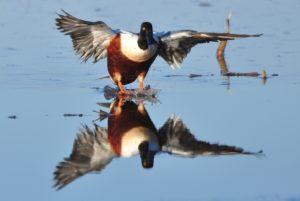
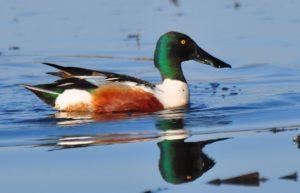
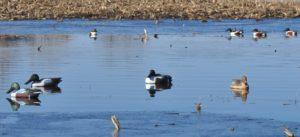
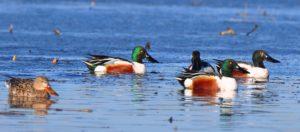

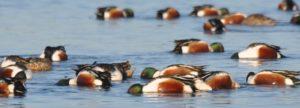
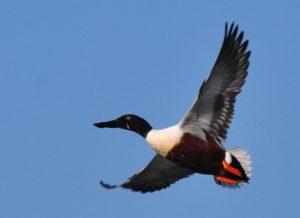
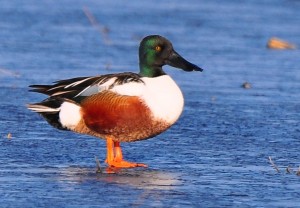
 Susan Judkins Josten
Susan Judkins Josten Rudi Roeslein
Rudi Roeslein Elyssa McFarland
Elyssa McFarland Mark Langgin
Mark Langgin Adam Janke
Adam Janke Joe Henry
Joe Henry Sue Wilkinson
Sue Wilkinson Tom Cope
Tom Cope Kristin Ashenbrenner
Kristin Ashenbrenner Joe Wilkinson
Joe Wilkinson Dr. Tammy Mildenstein
Dr. Tammy Mildenstein Sean McMahon
Sean McMahon